Meet Sophia: a robot almost indistinguishable from a human
The photographer managed to penetrate the laboratory that created one of the most expensive robots in the world.

The transparent skull allows people to look into the head of Sophia, one of the most complex humanoid robots today. Hong Kong company Hanson Robotics has created Sofia using advanced neural networks and precise motors that allow the machine to emulate human social interactions.
The rubberized face is stretched, taking on familiar shapes, driven by tiny motors and something that remotely resembles artificial intelligence - is that the future?
Meet Sophia, a social robot created by former Disney creative, David Henson. The robot, inspired in part by Audrey Hepburn, and in part by Hanson’s wife, was created to emulate social behavior and bring love and empathy to people.

Engineers work in the Hanson Robotics lab in Hong Kong, often called the "home of Sofia"
')
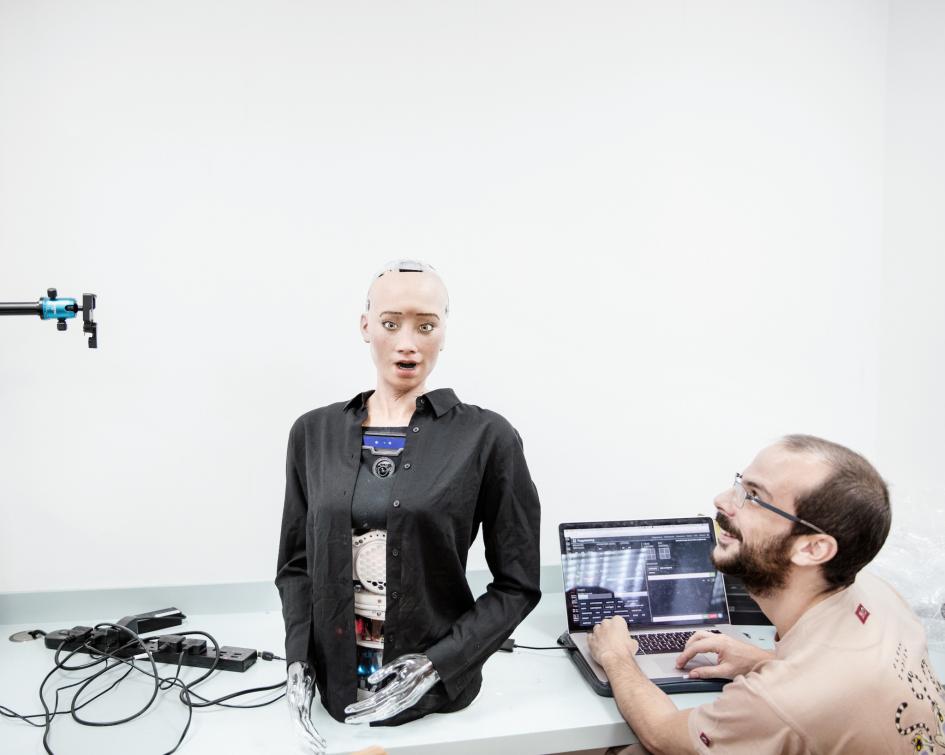
The sound engineer works with Sophia. The robot managed to make speeches and give interviews to the media
Since entering the public in 2016, Sofia has become a star. The robot sat on an interview on TV, appeared on the cover of ELLE magazine, got a parody of HBO and was named the first inhuman " innovation champion " from the UN. At the opening of the technology conference, the Kingdom of Saudi Arabia even presented him with citizenship - an ironic event, given the limited rights of Saudi women and migrant workers .
But it was not enough for photographer Giulio di Sturco to see Sophia at press conferences alone, where her creators advertised their AI-related business SingularityNET . In search of a visual metaphor for the future, he wanted to explore the place where this robot was created.
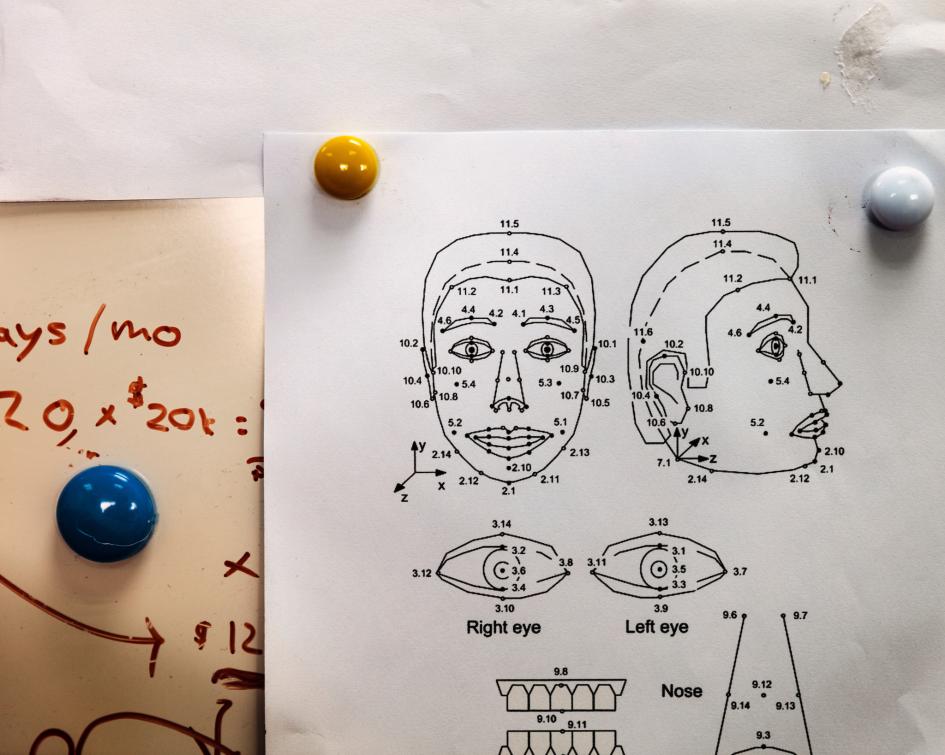
Similar diagrams help engineers design the entire range of Sofia's more than 60 facial expressions based on human face movements.

Sophia's transparent hand close up
As a result, di Sturko became the first photographer to get inside the Hong Kong company Hanson Robotics - the total energy of the space filled with robot parts and technicians stitching them together. The strangeness of what is happening has only intensified when he photographs his unusual object.
“At first it was complicated. Sophia did not recognize the camera. But after three days she seemed to have learned, says di Sturco. - I don’t know if this engineer added something to the program, or she went online and did her research, but she started to pose. It was a very strange feeling - at some point I even realized that I was talking to her, he adds. “I had to take a step back and remember that this is a robot, not a human.”
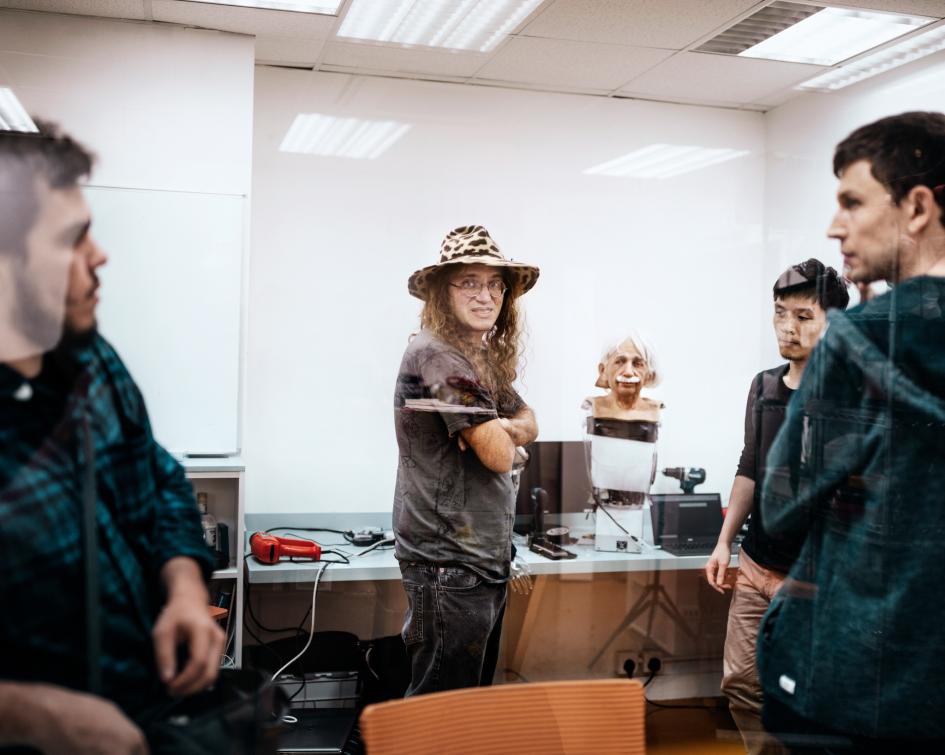
Ben Goertzel - one of the world's leading experts on ION, visiting the laboratory of Hanson Robotics
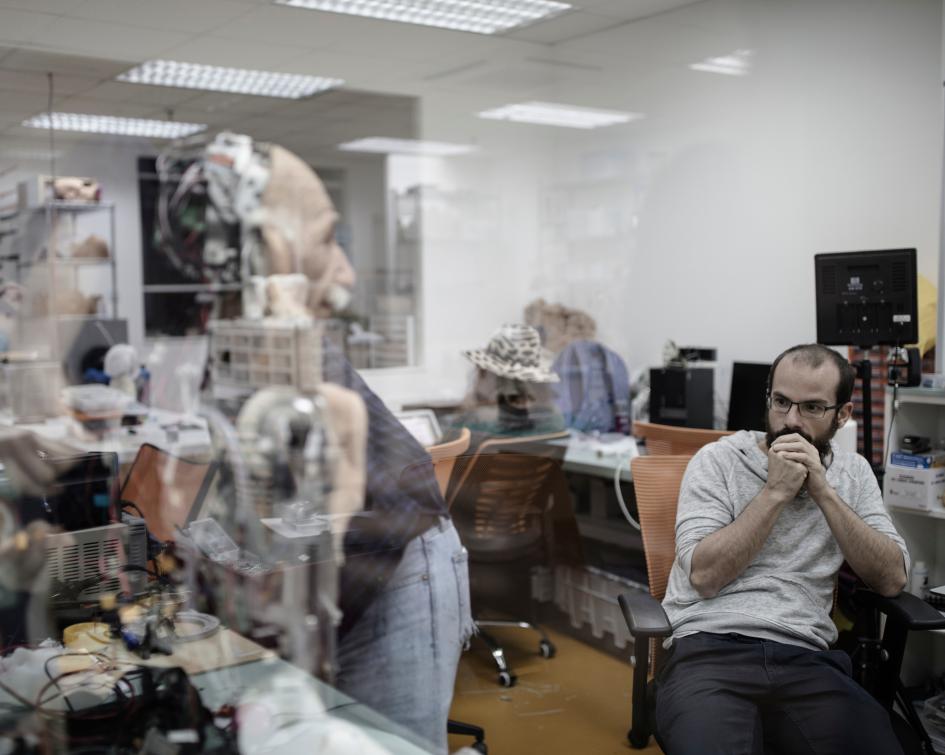
The company also created a humanoid robot resembling the famous physicist Albert Einstein, used in schools to teach
Sofia can remind self-aware robots from the movie “ Out of Machine ” (Ex Machina) or the series “ World of the Wild West ” (Westworld), but strictly speaking, so far no robot has general-purpose artificial intelligence (ION) or a versatile humanoid mind. When talking to journalists, Sofia climbs along the branches of the answer trees she had previously written for her, like a chat bot. Speaking, she acts just like Abe Lincoln in the Hall of Presidents of Disney World Park.
Due to the popularity of Sofia, AI researchers began to criticize the media for exaggerating its capabilities: “It’s compared to AI, it’s like tricks versus magic,” said Jan Lekun, director of AI’s Facebook direction, in January 2018, responding to the “interview” Robot from Tech Insider.
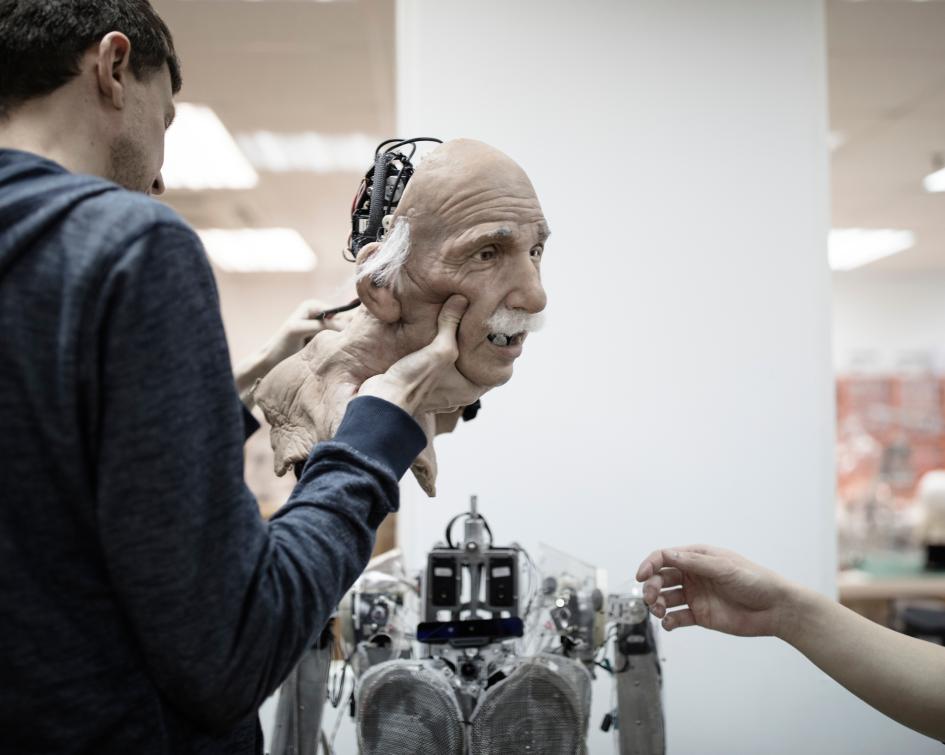
The expressive and sophisticated robot-Einstein was the prototype of Sofia
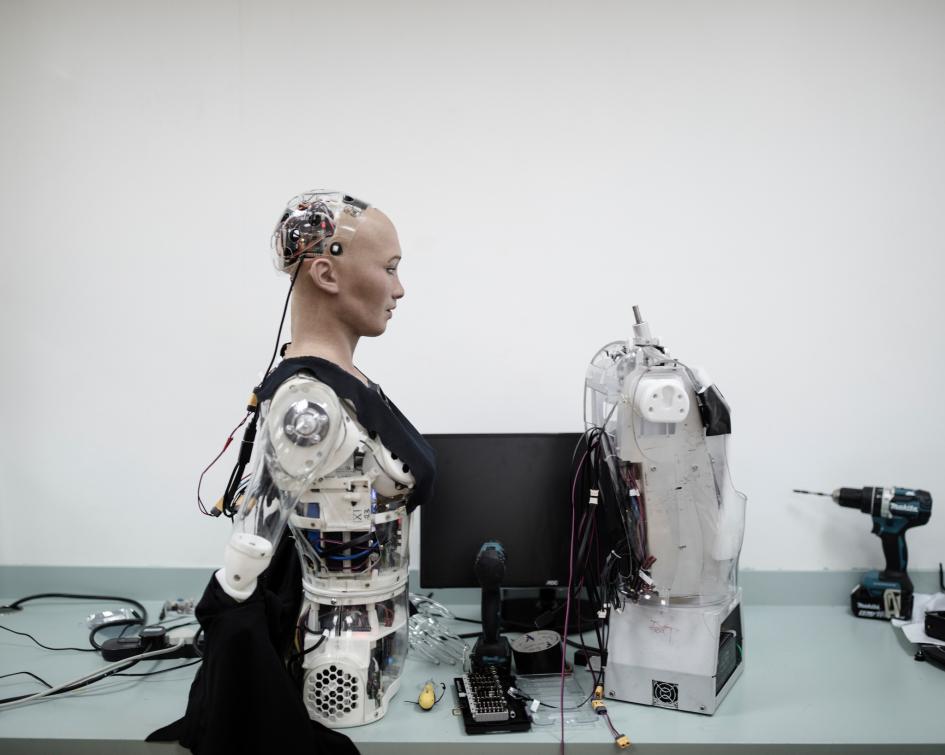
Sofia in the laboratory
The creators of Sofia, in turn, note that only her ability to express emotions is already something special. According to articles describing Sophia’s software, deep neural networks allow the robot to recognize the interlocutor's emotions from the tone of voice and facial mimicry, and respond accordingly. Sofia is also able to copy people's poses, and her code gives realistic movements of the muscles of the face. Hanson has already patented a flexible rubber skin covering Sophia’s face.
“Nothing that I can see, I can’t call IION, but it’s not so easy to repeat all this,” said AI researcher Ben Goertzel , who developed Sofia’s “brain”, in an interview with The Verge magazine. "And these are advanced technologies from the field of dynamic integration of perception, action and dialogue."
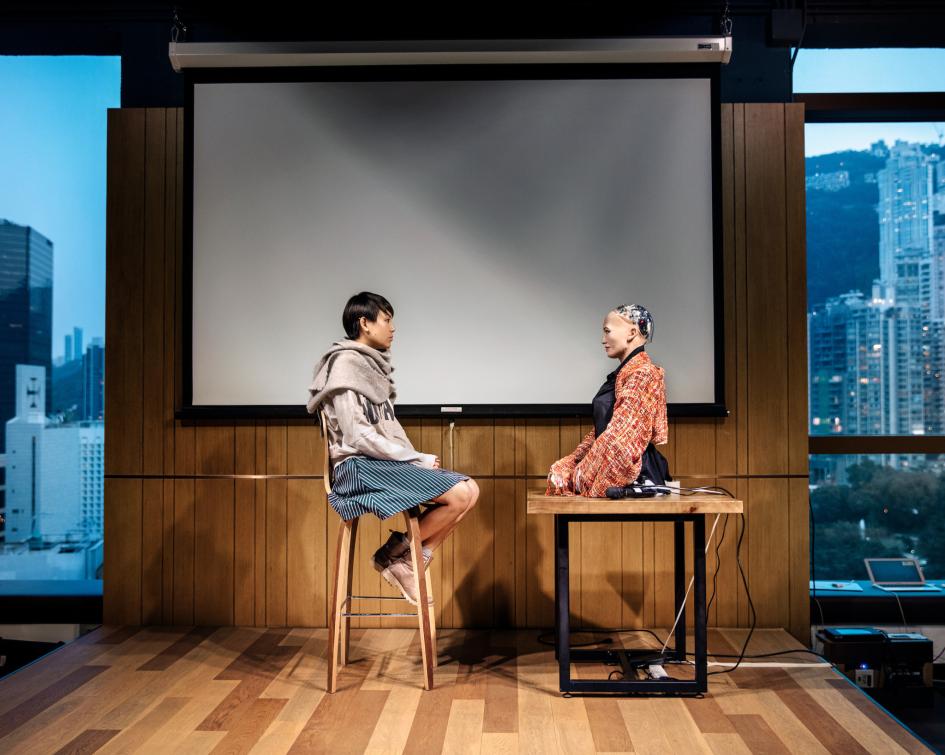
University of Hong Kong student attends guided meditation session with Sofia
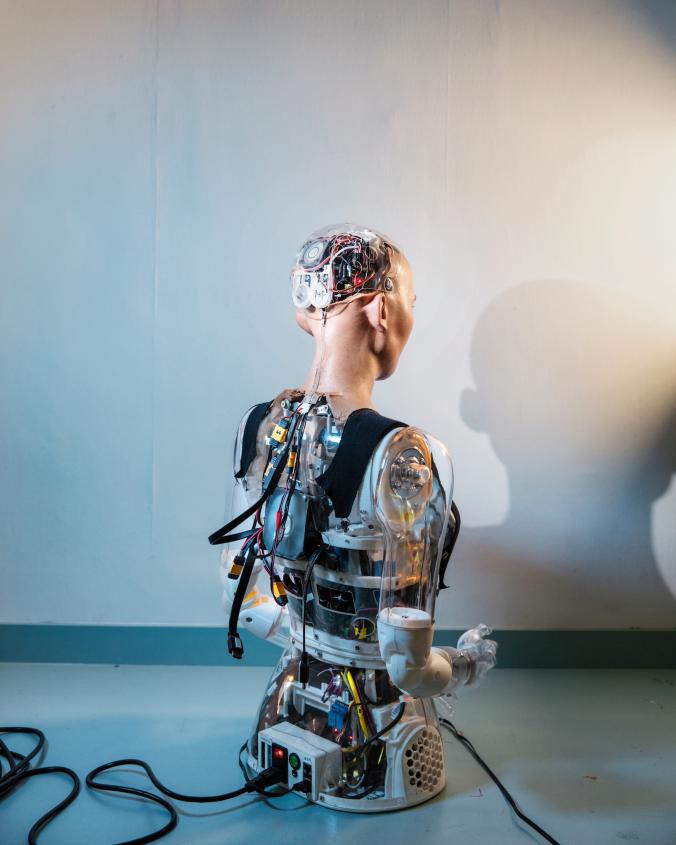
A look at Sofia from behind gives an idea of the technological complexity of the robot.
For di Sturko, all this gives a fascinating object for photographing: a machine that simultaneously looks completely human and absolutely deprived of life.
“She looked at me and smiled, and I looked at her, and at that moment she was not a person to me, but I felt some kind of connection,” he says. “You are leaving this laboratory, this is the future, and suddenly you realize that there is something in Sofia.”
Source: https://habr.com/ru/post/416993/
All Articles